Introduction
Art history as historically understood is the academic field concerned with the study of the items of art about their respective historical development and the artistic contexts of these items which cover the areas of look, genre, format, and design. Some of the items of art covered under this historical discipline include architectural objects, paintings and sculptures; as well as the minor forms of art like furniture, decorative items and ceramics that have some historical , meaning attached to them. Art history on the other hand is used to refer to the different methods of studying the visual arts and architectural items and constructions. One of the major concerns of this field is studying the aesthetic value of certain items where the enigma of the sublime is studied in the pursuit of determining the real essence of beauty. Some of the questions answered under this discipline are how the artist came to the point of creating the art; who the promoters or patrons of the art were and who the audiences of the art were. The other questions under this field include who if any; were the followers of the creator of the art; what historical events or forces shaped the artists’ creation and lastly the impact that the artist ad the art had on the social, political and social events surrounding the creation (Stokstad, pp. 34-37).
Christ enthroned on the other hand is the theme in the elaboration of the victory of Jesus Christ over evil, the devil, and the ills of the society from which he came to save humans. The underlying ideas under the theme of Christ enthronement are majesty owned by Christ, the sight into the future that was created and portrayed from the victory of Christ and the never-ending residence of him in the form of the Holy Spirit as he is the victorious Alpha and Omega. The other ideas that can be derived from these Christ enthroned art include the high position Jesus is assigned as the son of God; one with authority over the angels and humans among the other creatures and the honor of the victory he received after conquering the trials at the cross; and the power he exercised over the powers of the world like the victory over the plot by the Roman empire. Some of the items that are used in passing the message and theme content in Christ enthroned are the Christ Pantocrator, Christ in Majesty, Christ in Majesty with apocalyptic elements, and the cover of a sacramentary. The other items under this theme include the enthroned Madonna and child, Christ in majesty with David, the Apocalyptic Christ and Christ the ruler of all (Janson & Janson, pp. 23-25).
Exhibition title: Christ enthroned
Introduction text panel
Christ enthroned in simple terms can be used to mean the placement of Christ in an esteemed position of leadership or ruler-ship over a given group of people who in this case can be considered as being the Christians and the other affiliates of Christ. Here Jesus Christ the son of God as believed to be by Christians is enthroned in the lives of believers and in the heavenly throne. In addition, it should be noted that from the accounts documented in the bible; Christ did not seek to gain ruler-ship while in this world but rather the glory meant for him in heaven after the victory (Stokstad, pp. 34-37).
The eight objects to be discussed under the exhibition
1. The Christ Pantocrator artwork
This artwork has a Greek origin and is given one of the many names given to God in the usage of the God role El-Shaddai which is associated with Christ by Christian believers.
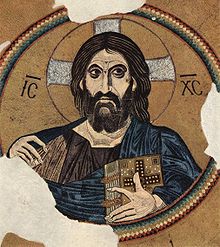
The Meaning of this work of art is portraying Christ as the ‘all-powerful or almighty’; which can further be used to imply the concept of one who rules over all the others. This artwork is thus useful in portraying the all-powerful nature of God and the sustaining role he plays in the present and the future of the world especially the believers. This artwork contributes to the theme of Christ being enthroned to power and authority in that it helps portray Christ as one who does everything and not just able to do them (Janson & Janson, pp. 23-25).
2. The Christ in Majesty artwork
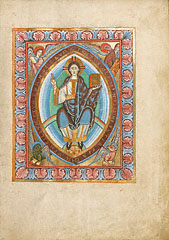
This artwork has a German origin deriving its meaning from the boundless mercies of the heavenly father in Christ; one full of blessings; and the all-powerful reigning nature of Christ from ‘saint John’s revelation. This artwork contributes to the theme of Christ’s enthronement to power in that it portrays Christ as one who took the reigning position among all creatures living and non-living; further indicating the boundless mercies he showers upon the human populace (Stokstad, pp. 34-37).
3. Christ in Majesty with apocalyptic elements
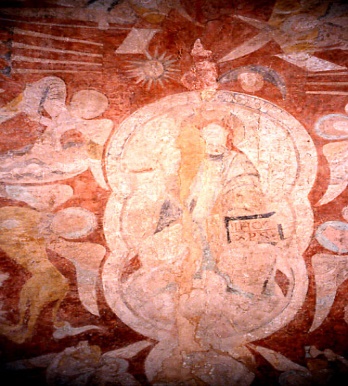
This artwork has a Greek origin where Christ sits on a rainbow while stepping on the earth like it is his footstool. This artwork is an indication of Christ as the being above all other forces and one who is in control of everything that takes place on the earth and around it. The fact that he is portrayed as using the earth as his footstool shows that he has power, control and reign over the humans and all their endeavors during their earthly lives. The contribution of this artwork towards the theme of Christ’s enthronement into power is that it portrays Christ as placed in a position of being the owner and controller of all the forces and everything that happens on earth and all creation in general. It can thus be viewed as an indication or contributor of Christ as being the controller and authority over all authorities (Stokstad, pp. 34-37).
4. The cover of a sacramentary
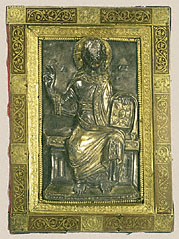
This artwork has a Belgian origin and is an engraved image of Christ on a gilt silver plate. In this artwork Christ is sited on a throne while blessing using the right hand with the left one holding a book. In addition, the names Alpha and omega are engraved on either side while angels surround the outer borders. This artwork is a depiction or portrayal of the boundless majesty of Christ and the fact that he is the beginning and the end of everything. The contribution of this artwork towards the theme of Christ’s enthronement to power is that it shows him as being elated into a majestic kingly character served by angels (Janson & Janson, pp. 23-25).
5. The enthroned Madonna and child

This is a thirteenth century artwork associated with the Catholics of Italy. The contribution of this artwork is that the pointing at the baby Christ points out that he is the only one enthroned with the power to save and offer salvation to the human race (Stokstad, pp. 34-37).
6. ‘Christ in magnificence and David with musicians’
This is an artwork associated with the Germans where Christ is portrayed blessing the psalm maker David who is surrounded by assistant musicians. The contribution of this artwork towards the theme of Christ enthronement to power as the source of power, blessings, might and the power that as a Christian one needs to be victorious (Stokstad, pp. 34-37).
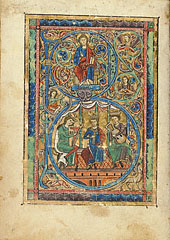
7. Apocalyptic Christ
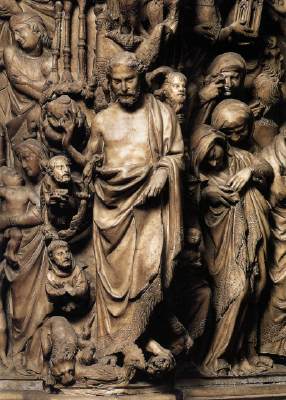
This is an artwork showing Christ being the figure during the panels of the massacre of the innocents and the crucifixion. The contribution of this artwork is that it portrays Christ as the unchanging, hope-giving, strengthening figure who never changes despite the changing situations. The contribution towards the theme is that he is the unchangeable figure who should be held onto for his followers to be still and steadfast (Stokstad, pp. 34-37).
8. Christ the ruler of all
This artwork is a 13th-century portrayal of the ever-reigning entity of Christ who is above all other identities, powers and sources of ruler-ship or strength. The contribution of this artwork towards the theme is that it portrays Christ as the ruler and absolute authority over all and everything (Janson & Janson, pp. 23-25).
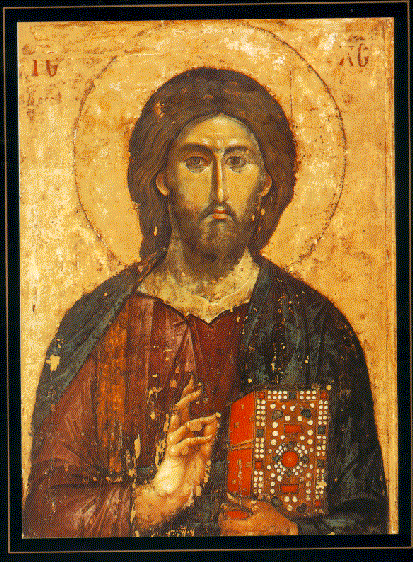
Works cited
- Janson, Henry., & Janson, Anthony. “History of art: slipcased”, sixth edition. Upper Saddle River, NJ: Prentice hall Press. (2001): 23-25
- Stokstad, Marilyn. “Art History”, Second edition. Upper Saddle River, NJ: Prentice Hall Press. (2001). 34-37